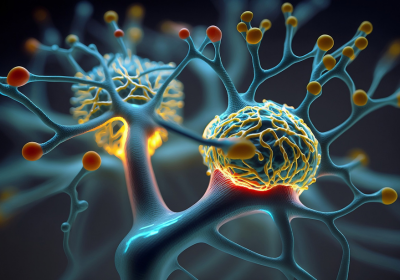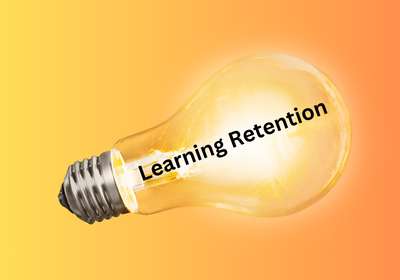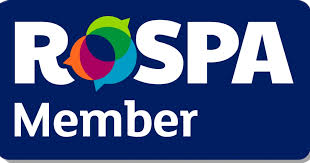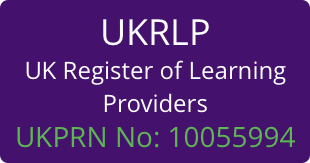
The field of neuroscience relating to training, often called “neurolearning,” explores how the brain processes, retains, and applies information during the learning process. By understanding the intricate processes within the brain, we can design more effective and engaging training programs, which can lead to better learning outcomes.
Let’s start by looking at some key insights into how our brains work and what this might mean for learning.
Neuroplasticity
The brain is not static, but is constantly rewiring itself in response to new experiences, forming new neural connections and solidifying existing ones, this is called neuroplasticity or brain plasticity. Neuroplasticity occurs in response to learning through reading, seeing, hearing, the experiences we have and adaptation to changes in our environment. Understanding neuroplasticity can be highly beneficial in developing better training programs for several reasons:
- Optimising learning with activities that engage the brain creates the formation of new connections and the reinforcement of relevant neural pathways.
- Tailoring training to an individual’s needs and capabilities, as people exhibit different levels of neuroplasticity based on factors such as age, genetics, and prior experiences, can help to ensure that the learning builds neuroplasticity.
- Adapting learning to cognitive aging, as when individuals age the brain undergoes changes in structure and function resulting in cognitive decline. Learning can increase cognitive health, potentially slowing down age-related cognitive decline.
- Incorporating engaging multiple sensory learning in training, and providing different modes of learning, can stimulate improved neuroplasticity.
- Enhancing skill acquisition in training programs, as neuroplasticity plays a key role in skill acquisition. By strategically engaging the relevant neural circuits and promoting the consolidation of skills through repeated practice, neuroplasticity can be improved and therefore so can the application of skills.
Memory
Our brains are fascinating organs, and different areas specialise in handling different types of memory and it is a complex process, as these different areas of the brain often work together in intricate ways. Understanding in a simplified way how memories are formed and stored helps ensure training material is presented in a way that promotes long-term retention.

Within memory there are two distinct sections; implicit memory and explicit memory. These two types of memory store and retrieve information in different ways, playing unique roles in how we learn and experience the world. Explicit memory, is conscious and effortful and enables us to recall facts, events, and experiences deliberately. Implicit memory is unconscious and automatic and guides our habits, skills, and emotional responses without any conscious effort.
Explicit Memory:
- The Hippocampus plays a crucial role in forming and consolidating long-term memories, especially personal experiences (episodic memories) and general knowledge (semantic memories). It also plays a role in retrieving and integrating visual memories during imagery, making it possible to imagine familiar places or objects.
- The Neocortex is the outermost layer of the brain that stores the actual content of memories. Different areas of the neocortex are responsible for different types of information, such as the visual cortex for storing visual memories and the auditory cortex for storing sounds.
- The Amygdala is the area of the brain that attaches emotional significance to memories, making them more vivid and easier to recall. It’s particularly involved in processing fear and emotional memories.
Implicit Memory
- The Basal Ganglia is a group of structures deep within the brain, the basal ganglia are responsible for procedural memory, which involves learnt skills and habits. Applying skills in the workplace relies on the basal ganglia.
- The Cerebellum, know as the “little brain” is located at the back of the head and plays a vital role in motor learning and coordination. It helps refine and fine-tune our movements through practice and repetition.
- The Prefrontal Cortex coordinates and integrates information from various brain regions to guide our thoughts, actions, and decisions. It plays a key role in our planning and decision-making. It acts as our working memory, holding onto information temporarily while we use it. During imagery, the prefrontal cortex helps retrieve relevant visual information from memory and manipulate it to create the desired mental image.
Our brain’s ability to remember things is nothing short of fascinating, and it all boils down to the intricate dance of neurons and their connections. Here’s a look into the remarkable process which if we understand enables us to identify the aim of our training:
Stage 1: The Sensory Register
Imagine a fleeting snapshot. That’s the sensory register, where incoming information from our senses (like sights, sounds, smells) is held for a mere fraction of a second. Think of it as a fleeting glimpse before the curtain falls.
Stage 2: Short-Term Memory (Working Memory)
If something catches your attention, it graduates to short-term memory. Here, the information is processed and manipulated for a few minutes, like holding a phone number in your mind while dialing. It’s like juggling mental balls, but with limited capacity.
Stage 3: Consolidation and Long-Term Storage
If the information in short-term memory is deemed important, it undergoes consolidation. This involves strengthening the connections between neurons, particularly in the hippocampus, which acts as a memory hub. Think of it as etching the information onto a more permanent mental canvas.

With an understanding of neurolearning, and how we can align the content of our training with how the brain processes and stores information, we can reinforce learning and promote long term memory retention to achieve the best possible learning outcomes. We are aiming for the delivery of our training to move a learner’s memory formation from stage 1 to stage 3; long term memory retention. So how can we best do this?
- We want to motivate and engage the learner, and get them emotionally involved in their training. This evokes positive emotions that can enhance memory and application of learning. Examples of learning content that can engage, motive and stimulate emotion are real life scenarios, storytelling, humour and gamification.
These types of activities can trigger dopamine, which acts like a little cheerleader in the brain, giving a motivational boost and enhancing the learning experience. Dopamine fuels our brain’s reward system, making us pay closer attention to the training material. It also strengthens the connections between neurons, making it easier for our brain to encode and store new information. Think of it like solidifying the learning, turning temporary pathways into permanent highways for knowledge. However, it’s important to remember that too much dopamine can be counterproductive, just like with any reward system, overstimulation can lead to distraction and impatience. - As we’ve learnt, the hippocampus is the brain’s memory centre. When it encounters new information, it’s initially stored in the short-term memory, stage 1. But when we facilitate Chunking, breaking down complex concepts into bite-sized pieces, the hippocampus is activated and transfers the information from short-term to long-term memory, stage 3
Each chunk acts as a stepping stone, helping the hippocampus create strong neural connections that solidify our understanding. Conversely, when presented with overwhelming amounts of information, we experience cognitive overload, making it difficult to process and retain new knowledge. Chunking breaks down complex concepts into smaller, digestible pieces, preventing overload and allowing our brains to focus on each chunk individually. - Every time we learn something new, connections between neurons in our brain are formed. The stronger these connections are, the more likely we are to remember what we’ve learnt. Connections get stronger the more we’re exposed to the same learning and with the less exposure the connections get weaker, which is why it’s hard to remember things that we only learn once. So to improve long term memory retention its important to deliver the same training to a learner more than once, over a period of time, but in different ways. As the saying goes Repeat It to Keep It: Third Time’s a Charm!
- The brain processes and remembers visual information much more effectively than text alone. When we see an image or diagram, our brains create strong neural connections associated with the information it represents. This visual encoding leads to better recall and long-term retention of the learning material. The visual cortex, a powerful brain region dedicated to processing visual information, is activated when visuals break through the boredom of words. Visual aids like images, diagrams, and animations can dramatically improve learning by leveraging the incredible visual processing capabilities of our brains. Visuals are inherently more attention-grabbing than text, I’m sure you’d agree. This heightened engagement promotes deeper focus and keeps learners actively involved in the learning process.
Visuals can translate intricate concepts into easily understandable information. Diagrams or illustrations can break down complex processes into steps, while animations can show how things move or change over time. This visual simplification reduces cognitive load and makes it easier for learners to grasp the key ideas. Diagrams can provide different perspectives on a concept, while animations can show possibilities and connections that might not be readily apparent from text. This creativity boost can lead to deeper understanding and a more detailed interpretation of the learning material.
Powerful visuals can evoke emotions, something we’ve already learnt can make the learning experience more memorable and impactful. Animation or a striking image can connect with learners on a personal level, creating a lasting impression that strengthens the association with the information being learnt. Studies have found that visuals can improve learning by up to 400%
Overall, neurolearning provides a valuable framework for designing training programs that are more effective, engaging, and aligned with the brain’s natural learning processes. While it’s important to remember that neuroscience is still evolving, its insights provide a powerful tool for improving the way we train and learn.
Author: Carolyn Lewis
You may also like:
Is AI going to Accelerate L&D Changes for the Better?
The Impact of e-Learning Growth on Workplace Learning
Are a Lack of Digital and Pedagogical Skills Negatively Impacting Learners?
Sources:
https://www.hopkinsmedicine.org/health/wellness-and-prevention/inside-the-science-of-memory
https://blogs.tees.ac.uk/lteonline/2021/03/02/the-power-of-visual-content/
https://blog.brain-friendly.com/repeat-it-to-keep-it-third-times-a-charm/







 UK: 0844 854 9218 | International: +44 (0)1488 580017
UK: 0844 854 9218 | International: +44 (0)1488 580017








